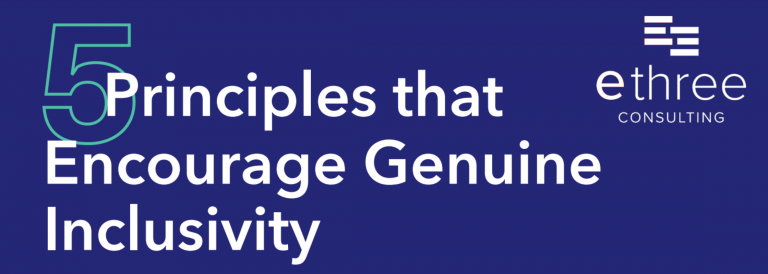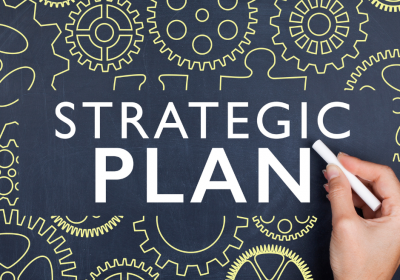
Balancing the needs of the individual with the needs of the organization
I (Jess) recently had the privilege to be involved in a fantastic discussion with techNL about today’s evolving workplace and the emerging trends that are shaping work today. That discussion solidified conversations we have been having internally at ethree about the “new” challenges organizations face as the last few years have unfolded.
Our world is ever-changing, and the world of work and “how work works” also has to evolve to keep pace with changes to norms and thinking. Now, that — and the challenges we face as a result — is not a new thing. But recent events, including Covid, plus so many more, have continued to redefine our view of work, the workplace, and how work should fit into our lives and have shined something of a spotlight on the changing perceptions of work.
Just in the last couple of weeks alone, we have been in a myriad of client conversations from: “how do we talk about and manage mental health at work?” to “how to work well with someone who seems very different than ourselves” to “how to foster more diversity in our businesses” to “how do we manage a team of partly remote, partly in office?” to “how do we find and keep the talent we need?”… and more.
While there may be nuances between them, all of these things are related to inclusivity and establishing an inclusive culture. How do we create an environment where each person can shine for who they are? How do we understand the needs of the individual and balance them with the needs of the collective organization?
Now, more than ever before, organizations that understand the power of empathy and inclusion are the ones that will continue to evolve, thrive and prosper.
But we know through many of our conversations with leaders and employees that achieving inclusivity can be hard. Balancing individual needs and organizational needs is not always simple and even having the conversation can seem fraught with peril if we say the wrong thing, or offend someone. And, frankly, sometimes we just don’t know where to start.
As with all things change and evolution, there are many ways forward – one is simply to take a first step. With that in mind, we are sharing an infographic with 5 principles we have found really helpful to foster productive and positive workplaces that encourage genuine inclusivity. They are:
The Platinum Rule: Treat other people the way they like to be treated
Coined by Dr. Tony Alessandra in the book of the same name, the platinum rule speaks to considering our natural diversity. We often learn that being respectful means to “treat other people the way you like to be treated” but no two people are the same – we know no two brains are the same! – so a better way is to understand someone else’s way of being and doing, and to treat them the way THEY like to be treated.Assume good intent
Our brains are wired to protect us, which is important, but sometimes drives unhelpful reactions. When someone does something that doesn’t work for us or we don’t like, we are often prompted to think it’s deliberate and possibly even malicious. This can cause us to respond in ways that negatively impact relationships and interactions. And in most cases it’s simply not true. People are unaware of their impact or taking a positively-driven action that has an unexpected negative consequence. Assuming good intent means when someone does something we don’t like, we don’t assume it’s about us. We assume they had a good reason for doing what they did, and we work to explore and adjust together.If in doubt, ask
Many times in discussions, we hear the “how do I…?” conversation. How should I approach this? How do I say this? How do I give feedback to this person? How do I do A without impacting B? Is it okay to use this term? Does this person mind if I…? And so on. This is fantastic because it means the person is considering the platinum rule! The simplest solution to all of that is to ask. Thoughtfully of course, but if you’re not sure how to work with someone, or what works for someone, ask them.Nothing about us without us
This is a concept about involvement and participation that has its roots in Central European politics. Essentially, if you are doing something that will impact someone else, or a group of people, then involve them. The more involved they are in shaping the direction or action, the more likely it is to work for everyone. Who doesn’t want things to work?Name and fame over blame and shame
There is no learning without mistakes. Our views and perceptions are ever-evolving and it’s not unusual for someone to find themselves out of step. It’s what you do in those moments that matter. Little positive change comes from blame and shame. A better option is to use those moments to notice and name what you are seeing and to explore adjustment. And when you see someone make a change – in language or approach – you want that person to feel like a rockstar – hence the fame – because that will not only reinforce the change but also increase their receptivity to future conversations.
It’s not an exhaustive list, an action plan or the solution to all inclusivity challenges and opportunities. Simply, these are tenets/principles/mindsets or whatever you want to call them – that we have found, through our work, help foster more positive working relationships and environments. We hope this helps to prompt thinking, discussion, consideration and conversation because as we like to say at ethree – everything starts with awareness. As Lao Tzu and Maya Angelou put so wisely, “the journey of 1000 miles begins with a single step… and when we know better we do better”. Let’s keep on the journey and keep getting better. If we can help you start or evolve the conversation about inclusivity in your workplace, get in touch. It’s why we do what we do.
You can download our infographic here to always have these principles on-hand.



